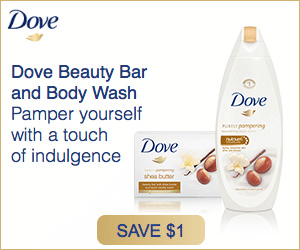August 29, 2019
How To Find and Define Your Brand Voice
Do you remember this scene from the movie Mission: Impossible? In his attempt to save the world from an evil villain, our hero, Ethan Hunt, has used a futuristic rubber face mask to assume the villain’s identity but, to complete the illusion, must also fully mask his voice because—no matter how much he obscures his face—if someone hears him speak, his cover is blown. Ethan Hunt accomplishes this trick with a state of the art voice changer, but the implication for our business is the same.
If you were to remove your logo, your color palette, and any unique identifiers, could a customer identify you by your brand voice alone?
What Is Brand Voice?
At its most basic level, your brand’s voice is the choice of words, attitudes, and values you choose to communicate your personality to your audience.
Your voice should be what every person hears when they interact with your business. It is the messaging that drives the content on your website, the feeling of your social media posts, the words you use to respond to emails, how you speak internally, even the enthusiasm with which you answer the phone.
Like your own voice, where 93% of our communication is non-verbal, your brand’s voice is defined not by what you say but how you say it.
When you speak, your voice tells the listener things like how you feel, your personality, how approachable you are, and your mastery of the subject you’re speaking about.
It’s no different for your business. Having an established and consistent tone of voice can build trust with your audience, communicate your character, and set you apart from competitors in your industry.
In other words, defining your brand voice can move your business from just another nameless company into a household name.
For instance, when you hear the words “quality skincare” what companies come to mind? For many of us, we immediately picture companies like Dove or Bath and Body Works. Why? Because these companies go out of their way to make sure all of their messaging symbolizes these words. Notice how the ad below doesn’t use this phrase specifically, but one can’t help feeling its impact.

What if you heard the messages: “pure freedom,’ “turn your daily commute into an adrenaline fest,” “as big and as real as it gets,” does the image of a Harley Davidson motorcycle cruising down an empty highway come to mind? If it does, could it be because for over 100 years messages like this (and others like it) have been the core focus of their brand’s personality?

A successfully defined brand voice will separate your company from the masses. Done properly it can even help your audience identify your business in the absence of your name or physical branding.
In this article, we’ll go over a few ways you can find and define a voice for your brand.
#1 Get Clear on Who You Are
One of the most important aspects of defining your brand’s voice is clarifying your brand’s identity. If your voice is inconsistent with your identity, you will confuse and lose trust with your audience.
What does your brand stand for? What makes you different? What story do you want your brand to tell? What’s your why?
A great place to start answering these questions is with your brand’s mission, vision, and values.
Establishing or clarifying these foundational pillars of your identity will provide a great launchpad to begin thinking about how you should communicate to your audience.
Action Item: Write out your mission, vision, and values.
#2 Consider Your Audience
In addition to looking at your brand’s pillars, it helps to look to your current and future customers to help define your voice.
Start by looking at your current customers. Take a look at past website content, sales brochures, email marketing, social media, and ask yourself: What messages have resonated with our customers in the past? What has caused confusion or mistrust?
It may also be helpful to ask your customers these questions directly. Send out a survey, bring it up in a quarterly review, or simply call and ask them to define your brand’s personality in their words.
Once you’ve identified some of the “words that work” with your current customers, it’s important to distinguish the voice that resonates with your industry as a whole. Some questions to consider are:
- What are competitors saying that you like/dislike?
- What publications and media does your audience prefer?
- How do members of your target audience speak to each other (in social media groups, forums, in person, etc.)?
- How can you use others’ voices to inform your own?
From here, we can start to develop some key messaging statements that we’d like our customers to connect with our brand. When a company like Dove uses a statement like “we believe beauty should be a source of confidence and not anxiety” on their website, it does more than just provide information. It reinforces their personality and values. It’s considerate of their target audience but also gives them a window into who Dove is.
Action Item: Create a list of 5-10 “key messaging statements” you’d like your audience to associate with your brand.
#3 Make a Decision on Your Tone
The voice we choose for our brand is a long-term decision. We’ve all seen what happens when companies try to change their voice to “fit-in” or to comment on a current event where they don’t belong. It nearly always backfires and, in the age of social media, is hardly ever an isolated incident.
If Harley Davidson suddenly changed their messaging from the ad above to something that appealed to the fast-growing audience of competitive gamers they would at best sound inconsistent, and at worst alienate their current die-hard fanbase. A silly example but clearly, sudden changes in voice can have dire consequences for your brand.
To avoid future inconsistencies when defining your brand voice it’s helpful to decide what your tone of voice isn’t, as much as what it is. For instance, the different tones of voice for a local non-profit might be:
- Compassionate, but not gushing.
- Approachable, but not casual.
- Smart, but not arrogant.
- Thorough, but not complex.
- Purposeful, but not abrasive.
- Experienced, but not impersonal
Identifying multiple dimensions of your voice will give you clarity in how and where it should be used to best communicate your brand’s personality. In the example, you would expect to see very respectful, yet casual messaging from this brand. While their tone may adjust (a financial report will obviously sound different than a social media post) their personality and voice should consistently remain within these guidelines.
To help pare this down, the Neilson Norman Group has identified four broader dimensions of the tone of voice.
- Funny vs. serious
- Formal vs. casual
- Respectful vs. irreverent
- Enthusiastic vs. matter-of-fact
It may be helpful to rate your brand in between these dimensions when defining your brand’s voice. (ie. on a scale of 1 to 10 are you more funny or serious, more formal or casual, etc.). From there you can get specific with defining your different voice tones.
Action Item: Compile a list of adjectives that describe what your brand is, and isn’t.
#4 Implement
You’ve identified your brand’s personality, defined your voice, and settled on a tone. Now’s the most important step, making sure everyone on your team is using it properly.
To begin, set some clear boundaries and ensure they are easy to reference. Creating an internal document that lists all the pieces we’ve discussed and set some specific rules can be a great help here. Whether you only share this document with your team or make it public is up to you, but include items like:
- Your mission, vision, and values
- A snapshot of your target audience or buyer personas
- Shared messaging specific to your customers and your industry
- Your brand’s tone of voice
- Grammar and mechanics guidelines, vocabulary use cases, and specific examples
Action Item: Create a resource for your team that defines your voice and set specific guidelines on implementing it.
Final Thoughts
A key part of developing your brand’s verbal identity is ensuring your voice and tone create trust and authenticity in the minds of your audience. Finding and Defining your brand voice and establishing clear guidelines on how to use it will ensure your brand’s personality remains consistent in every piece of content you produce.
With a clear idea of who you are and what your customers want to hear, you can define what your brand should say and how to say it. Every line of copy, every headline, and every story should have a singular voice (with specific tones for each use case).
If you’re still unclear, PHOS can help you define what your voice is, and assist you in setting up a communication guide so that every message your organization sends is cohesive. This will lead to customers recognizing your brand based on your voice alone, whether they see your “face” or not.







